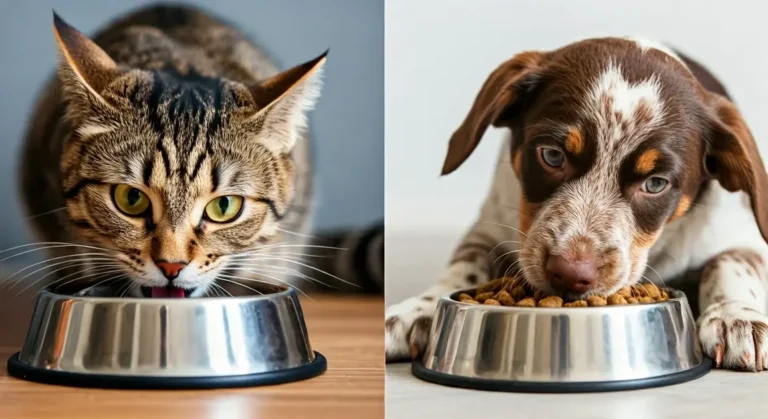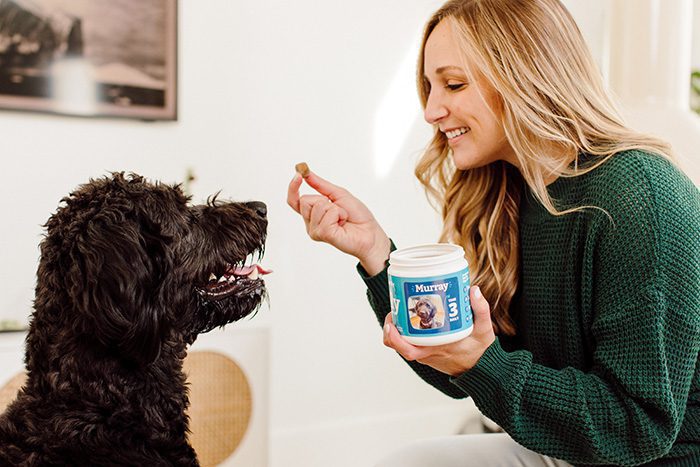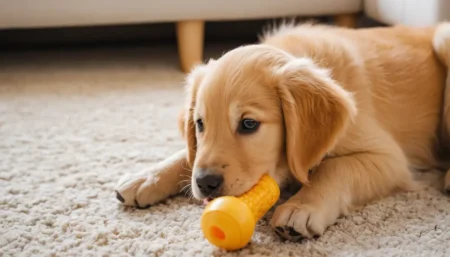When it comes to feeding your furry family members, a cat and dog food comparison is essential because cats and dogs have very different nutritional needs. This guide breaks down the science, ingredients, label reading, and practical feeding tips so you can choose or create a diet that keeps each pet healthy and happy.
Why a Cat and Dog Food Comparison Matters
Understanding the key differences in nutrition helps you avoid costly mistakes, prevent health problems, and keep both pets thriving.
A cat and dog food comparison also clarifies why a product marketed for “all‑pet families” can be harmful to one species but perfectly fine for the other.
Below are the top reasons you should treat each diet as a separate formula.
- Species‑specific health risks: Feeding dog food to a cat can lead to taurine deficiency, while feeding cat‑only kibble to a dog may result in inadequate fiber.
- Optimal performance: Tailored nutrition supports a cat’s hunting instincts and a dog’s energy for walks, training, and play.
- Cost‑effectiveness: Buying the right food reduces waste from rejected meals and expensive vet visits.
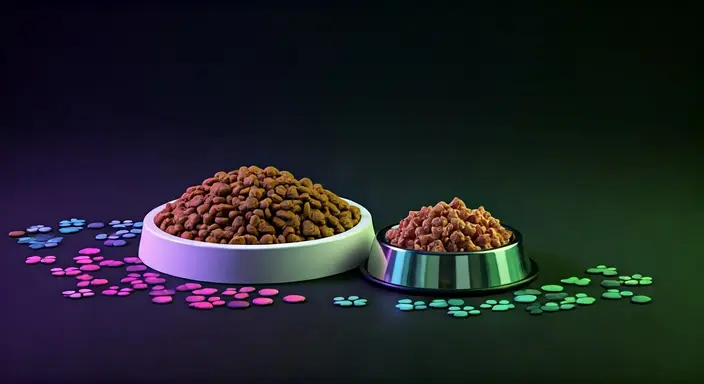
Biological Differences That Drive a Cat and Dog Food Comparison
Cats and dogs evolved from different ancestors, and their digestive systems reflect those origins. A clear cat and dog food comparison starts with the basic biology that shapes every nutrient requirement.
- Obligate carnivore vs. omnivore: Cats must obtain certain nutrients—especially taurine, arachidonic acid, and vitamin A—from animal tissue, while dogs can synthesize some of these from plant precursors.
- Metabolic rate: Cats have a higher resting metabolic rate per pound of body weight, meaning they burn calories faster despite often being less active.
- Taste receptors: Cats lack sweet‑taste receptors, so carbohydrate‑heavy foods are less appealing, whereas dogs enjoy a broader flavor spectrum.
These facts explain why the same kibble cannot satisfy both species equally well.
Nutrient Requirements – Protein, Fat, and Carbohydrates
A sound cat and dog food comparison must examine the three macronutrients that fuel every cell. Below, we break down each nutrient, the ideal range for each species, and why the numbers differ.
Protein Needs
Protein supplies amino acids for muscle, skin, coat, and organ health.
- Cats: Minimum 30 % of dry matter; ideal range 35–45 % for most adult cats.
- Dogs: Minimum 18 % of dry matter; most adult dogs thrive on 22–30 %.
Cats cannot store excess protein, so they rely on a steady supply. Dogs, however, can use protein for energy when carbs are scarce.
Fat Requirements
Fat delivers essential fatty acids, supports brain development, and improves palatability.
- Cats: 9–15 % of dry matter, with a focus on arachidonic acid from animal fat.
- Dogs: 8–12 % of dry matter; omega‑3 and omega‑6 ratios are important for skin and joint health.
A diet too low in fat can cause a cat’s coat to become dull and a dog’s skin to become itchy.
Carbohydrate Tolerance
Carbohydrates provide quick energy but are not essential for cats.
- Cats: ≤10 % of dry matter; excess carbs can lead to urinary issues and obesity.
- Dogs: 30–50 % of dry matter is typical; dogs can metabolize starches efficiently.
Because cats lack the enzyme amylase in their saliva, they process carbs more slowly than dogs.
Quick Reference Table
| Nutrient | Recommended % (Dry Matter) – Cats | Recommended % (Dry Matter) – Dogs |
|---|---|---|
| Protein | 35–45 % (minimum 30 %) | 22–30 % (minimum 18 %) |
| Fat | 9–15 % (essential arachidonic acid) | 8–12 % (balanced omega‑3/6) |
| Carbs | ≤10 % (optional) | 30–50 % (starch source) |
| Taurine | ≥0.1 % (mandatory) | Not required (synthesized) |
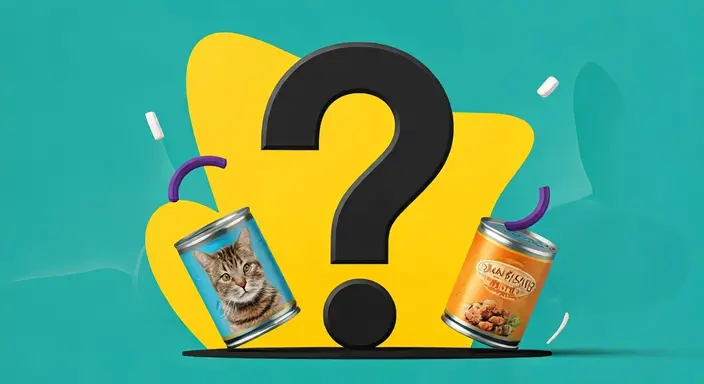
Key Ingredients in Cat Food vs Dog Food
When performing a cat and dog food comparison, the ingredient list tells the story behind the numbers. Below, we highlight the most common components and why they matter to each species.
Animal‑Based Protein Sources
- Chicken, turkey, fish, and beef: High‑quality, highly digestible proteins prized by both cats and dogs.
- Organ meats (liver, heart): Rich in vitamins and minerals; essential for cats’ vitamin A needs.
Taurine and Other Essential Amino Acids
- Taurine: Critical for feline heart health, retinal function, and reproduction. Dogs synthesize it, so most dog foods omit it.
- Arginine: Required by both species; deficiency in cats can cause rapid ammonia buildup.
Fat Sources
- Animal fats: Provide the fatty acids cats cannot synthesize.
- Fish oil: Offers omega‑3 DHA, beneficial for both brain development and joint health.
Carbohydrate Sources
- Rice, barley, and sweet potato: Common in dog foods for energy and fiber.
- Pea protein and corn gluten: Frequently used in budget dog foods; less ideal for cats due to lower digestibility.
Fiber and Prebiotics
- Beet pulp, psyllium husk, and chicory root: Promote healthy gut flora in dogs and aid in weight management for cats.
Additives and Supplements
- Glucosamine & chondroitin: Joint support, especially important for active dogs and senior cats.
- Probiotics: Boost immune function; evidence suggests stronger benefits in dogs, but still valuable for cats.
When you line up these ingredients side‑by‑side, the cat and dog food comparison becomes obvious: cat formulas prioritize animal protein, taurine, and limited carbs, while dog formulas aim for a balanced mix of protein, fats, and carbohydrates.
Commercial Food Types – Dry, Wet, Raw, and Semi‑Moist
A thorough cat and dog food comparison also examines the format of the food you serve. Each type carries distinct advantages and drawbacks for each species.
Dry (Kibble)
- Pros: Convenient, long shelf life, inexpensive, and helps clean teeth.
- Cons for cats: Low moisture (≈10 %) can contribute to urinary concentration; many cats find kibble less aromatic.
Wet (Canned)
- Pros for cats: High moisture (≈75–80 %) supports urinary health; stronger aroma stimulates picky eaters.
- Pros for dogs: Soft texture for older dogs with dental issues; higher protein content in many brands.
Raw (Fresh/Frozen)
- Pros: Mimics ancestral diet, high digestibility, natural enzyme activity.
- Cons for both: Risk of bacterial contamination, costly, requires careful handling.
Semi‑Moist
- Pros: Palatable, high palatability for training.
- Cons: Often high in sugar and salt; low nutritional density.
When deciding which format to use, weigh your pet’s health status, lifestyle, and budget.
Reading Labels – A Guide for a Cat and Dog Food Comparison
Even the best‑looking bag can hide nutritional gaps. Learning to decode the label is the backbone of any cat and dog food comparison.
Guaranteed Analysis
- Lists minimum protein and fat percentages and maximum fiber and moisture.
- Look for a minimum of 30 % protein for cats and a minimum 18 % for dogs.
AAFCO Statements
- “Formulated to meet the nutritional levels established by the AAFCO Dog Food Nutrient Profiles” or the Cat Food Nutrient Profiles.
- Indicates the diet is complete and balanced for the stated life stage.
Ingredient List
- Ingredients appear in order of weight.
- First three ingredients should be high‑quality animal proteins for both species, but especially critical for cats.
Additive Highlight
- Taurine must be listed for cat foods; its absence means the product is unsuitable for cats.
- Look for “Omega‑3 DHA” sources for brain and eye support in both cats and dogs.
Best‑by Date
- Freshness matters more for wet and raw foods; expiration dates ensure nutrient integrity.
By systematically reviewing each of these sections, you can complete a reliable cat and dog food comparison with confidence.
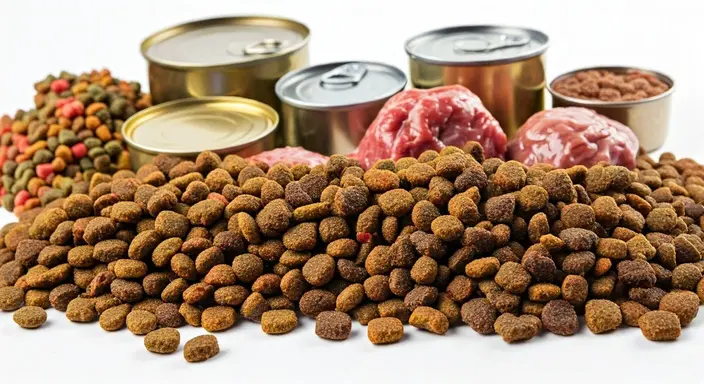
Special Diets – Life Stage, Weight Management, and Health Conditions
Pets have changing needs throughout their lives. A nuanced cat and dog food comparison includes the right formula for each life stage and specific health concerns.
Kittens & Puppies
- Higher protein (≥30 % for cats, ≥22 % for dogs) and fat (≥18 % for kittens, ≥12 % for puppies) to support rapid growth.
- DHA from fish oil supports brain development.
Adult Maintenance
- Balanced protein and moderate calories.
- For cats, maintain taurine levels to protect the heart.
- For dogs, include glucosamine for joint health if the activity level is high.
Senior Pets
- Reduced calories to prevent obesity, but increased high‑quality protein to preserve lean mass.
- Joint supplements (glucosamine, chondroitin) become more important.
Weight Management
- Calorie‑controlled formulas with added fiber for satiety.
- Use measured portions; avoid free‑feeding, especially for dogs prone to obesity.
Medical Conditions
| Condition | Cat Food Focus | Dog Food Focus |
|---|---|---|
| Kidney disease | Reduced phosphorus, increased omega‑3s | Low‑protein, low‐phosphorus formulas |
| Diabetes | Low‑glycemic carbs, consistent carbohydrate levels | Controlled carbohydrate content, high‑fiber blends |
| Food allergies | Single‑protein source, grain‑free if grain‑sensitive | Hydrolyzed protein or novel protein diets |
| Gastrointestinal upset | Easily digestible protein, prebiotic fiber | Probiotic‑enriched, limited fat |
When a pet is diagnosed with a medical issue, the cat and dog food comparison must narrow to a therapeutic diet that meets the specific nutrient modifications.
Homemade & Raw Diets – Pros and Cons in a Cat and Dog Food Comparison
Many owners wonder whether cooking at home can outperform commercial foods. A balanced cat and dog food comparison includes an honest look at homemade and raw options.
Advantages
- Complete ingredient transparency – you know exactly what’s in each bowl.
- Tailored to individual needs – you can adjust protein, fat, and supplements.
- Potentially higher palatability – fresh meat often excites picky eaters.
Disadvantages
- Nutrient gaps: Without a veterinary nutritionist, essential nutrients (especially taurine for cats) may be missed.
- Food safety: Raw meat can harbor Salmonella, E. coli, and Listeria. Proper handling and freezer storage are a must.
- Time & cost: Preparing balanced meals daily can be labor‑intensive and more expensive than quality kibble.
Sample Balanced Recipe (Cat)
| Ingredient | Amount (grams) | Nutrient Highlights |
|---|---|---|
| Chicken thighs (with skin) | 150 | High protein, essential fatty acids |
| Chicken liver | 30 | Vitamin A, iron, taurine |
| Egg yolk | 10 | Biotin, vitamin D |
| Pumpkin puree | 15 | Fiber for digestion |
| Calcium carbonate (powder) | 2 | Calcium balance |
| Taurine supplement | 0.2 g | Critical for cardiac health |
| Water | 50 ml | Hydration |
Mix ingredients, cook lightly (if desired), and serve fresh. Always run a homemade formula by a board‑certified veterinary nutritionist.
Feeding Practices and Portion Size
Even the perfect diet can fail if the feeding routine is off. A well‑executed cat and dog food comparison includes practical guidance on portion control and feeding schedules.
Calculating Daily Calories
- Determine Resting Energy Requirement (RER):
[\text{RER} = 70 \times (\text{body weight in kg})^{0.75}] - Adjust for life stage and activity:
- Kittens/puppies: RER × 2–3
- Adult neutered: RER × 1.2–1.4
- Active adult: RER × 1.6–2.0
- Convert calories to grams of food: Use the label’s kcal per cup or can.
Feeding Frequency
- Cats: Typically 2‑3 small meals per day; free‑feeding can lead to overeating.
- Dogs: 1‑2 meals per day for adults; puppies need 3‑4 meals.
Monitoring Body Condition
- Body Condition Score (BCS): 1 (emaciated) to 9 (obese). Aim for 4–5.
- Visual check: Feel ribs—should be palpable but not visible.
Adjusting Portions
- Re‑weigh food weekly.
- Increase or decrease by 5–10 % based on weight trends.
Adhering to these guidelines ensures the cat and dog food comparison you performed translates into real‑world success.
Common Mistakes in a Cat and Dog Food Comparison
Even knowledgeable owners slip up. Below are frequent errors and how to avoid them.
- Assuming “all‑pet” foods are balanced for both: These formulas often meet only the minimum for dogs, leaving cats nutritionally deficient.
- Ignoring moisture needs: Cats fed only dry kibble can develop urinary crystals; dogs can become chronically dehydrated if water intake is low.
- Over‑relying on protein alone: Excess protein can strain the kidneys in senior pets, while inadequate fat reduces skin and coat health.
- Skipping label updates: Formulas change; always check the latest label before repurchasing.
- Failing to transition gradually: A sudden switch can cause gastrointestinal upset; a 7‑10‑day transition is recommended.
Avoiding these pitfalls makes any cat and dog food comparison more accurate and safer.
How to Transition Your Pet to a New Food Safely
Switching diets is a critical step after completing a cat and dog food comparison. Follow this proven 7‑day plan to minimize digestive upset.
- Day 1–2: Mix 25 % new food with 75 % old food.
- Day 3–4: Increase to 50 % new, 50 % old.
- Day 5–6: Blend 75 % new with 25 % old.
- Day 7: Serve 100 % new food.
During the transition:
- Monitor stool consistency; adjust portion size if diarrhea appears.
- Keep fresh water available at all times.
- Reward with a small treat if the pet shows enthusiasm for the new flavor.
If adverse signs persist beyond Day 7, consult your veterinarian before proceeding.
FAQs
Can I feed my cat dog food occasionally without harming them?
Occasional small bites of high‑quality dog kibble won’t cause immediate harm, but it lacks essential taurine and vitamin A, so it shouldn’t replace a balanced cat diet.
How do I know if a commercial brand is truly “complete and balanced”?
Look for an AAFCO statement on the packaging that specifies the formula meets the nutrient profiles for the intended life stage (e.g., “complete and balanced for adult cats”).
Are grain‑free diets better for dogs or cats?
Grain‑free isn’t automatically superior. Some dogs have grain sensitivities, while most cats thrive on grain‑free diets because they require fewer carbohydrates. Always check the ingredient list and your pet’s health history.
My senior dog has arthritis—should I switch to a raw diet?
Raw diets can provide high‑quality protein and joint‑friendly fats, but they don’t guarantee adequate glucosamine. A commercial senior formula with added joint supplements is often safer and more convenient.
How often should I re‑evaluate my pet’s diet?
Reassess at major life events: after spaying/neutering, during each life‑stage transition (kitten → adult, adult → senior), after any health diagnosis, and whenever you notice weight changes.
Conclusion
A thorough cat and dog food comparison reveals that cats, as obligate carnivores, require diets rich in animal protein, taurine, and moisture, while dogs, as omnivores, benefit from a balanced mix of protein, fats, and digestible carbohydrates.
By analyzing nutrient requirements, ingredient lists, commercial formats, label information, life‑stage needs, and possible homemade or raw alternatives, you can craft a feeding plan that meets each pet’s unique physiological demands.
Remember to calculate calories, monitor body condition, and transition foods gradually to protect digestive health. Use the checklist and tips provided in this guide to make confident, evidence‑based choices—your cat and dog will thank you with vibrant coats, playful energy, and longer, healthier lives.


